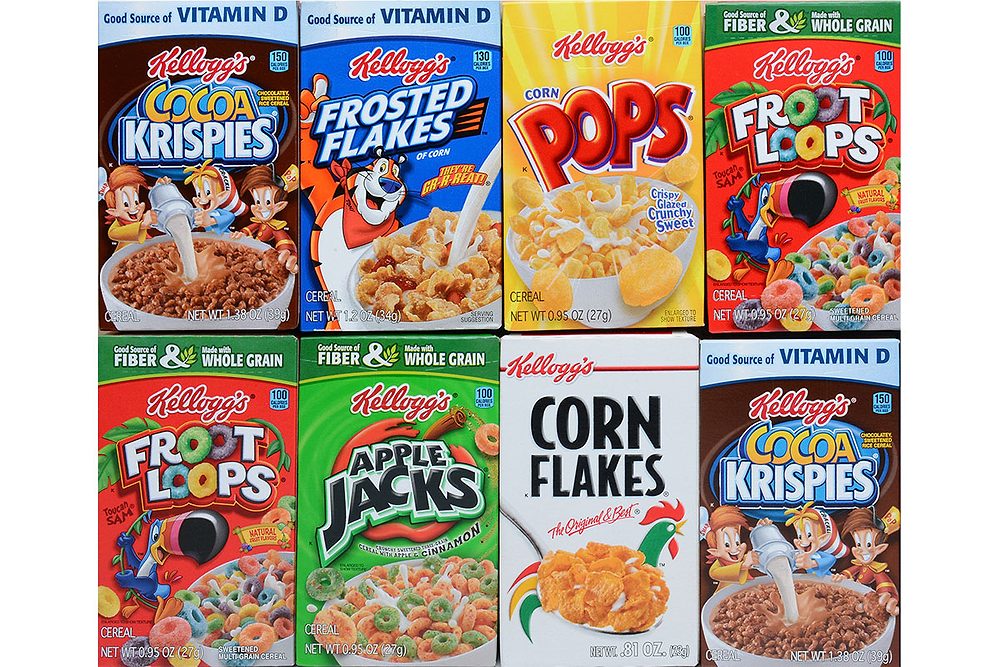NEW YORK — The management team of the soon-to-be cereal centric W.K. Kellogg Co. has two primary goals — upgrade and grow a business that has been a cog in a much larger organization featuring a diverse product portfolio and accelerate future top-line growth by looking beyond cereal.
The leaders of the business that is scheduled to be spun off from The Kellogg Co., Battle Creek, Mich., during the fourth quarter of this year presented their go-to-market strategy during Kellogg’s Aug. 9 investor day that took place in New York.
“… The fundamental difference between today and tomorrow is that absolutely everything we are going to do will be (in) the service of cereal,” said Gary H. Pilnick, chief executive officer designate of W.K. Kellogg and current vice chairman of corporate development for the Kellogg Co. “That will result in very different decisions, very different investments and what you'll hear about is very different outcomes.”
The new company is forecast to generate $2.7 billion in annual sales in 2024, operate six manufacturing plants — four in the United States, one in Canada and one in Mexico — employ 3,000 and manage a robust portfolio of well-known brands.
“Our plan assumes that (the cereal) category reverts back to pre-pandemic trends and declines low single digit,” said David McKinstray, who will be chief financial officer of the new company. “Therefore, we would expect our net sales to be approximately flat over the three-year horizon with stand-alone adjusted net sales of approximately $2.7 billion in 2024.
“In 2024, we expect adjusted EBITDA to be in the range of $255 million to $265 million. This projection includes the cost to operate as a stand-alone company. … We expect EBITDA margin to have improved by approximately 500 basis points by the end of 2026, resulting in mid-teens EBITDA margin.”
Mr. Pilnick divided W.K. Kellogg’s strategy into two “horizons.” The first will be focused on building the company’s foundation and scaling the cereal business. The second will leverage the cereal business to grow beyond cereal and accelerate the company’s top line.
Keys to building the foundation and scaling the cereal business will be a commercial plan to win in cereal and modernizing the company’s supply chain.
“Executing on these priorities would result in outsized margin growth, a stable top line and significant cash flow improvement, allowing us to deliver strong returns and capital to share owners,” Mr. Pilnick said.
One benefit of the spin-off is the W.K. Kellogg Co.’s sales team will solely be focused on selling cereal, said Mr. Pilnick.
“As a cereal-focused organization, we will integrate brand and channel strategies,” said Bruce Brown, chief customer officer. “First, we will integrate across markets and channels to drive the best decisions across our business. That means we will manage a single P&L for our US retail business, our Canadian business, our Caribbean business and our Away-From-Home business. This is very different, as in the past, all those businesses have been managed separately.
“Next, we will create focused cross-functional teams. And with a focused sales organization at the channel level, we will get more granular with the category to find the right opportunities at the intersection of brands and consumer channels. Being more granular means we can more actively manage this intersection to identify gaps and conversion to capitalize to drive growth for customers and ourselves.”
Upgrading the company’s manufacturing supply chain also will be a priority for the new company. The W.K. Kellogg Co. plans to invest between $450 million and $500 million over the next three years to align and improve its supply chain.
“We … have approximately (a) 20% differential in operating efficiency from our most to our least efficient facility,” said Sherry Brice-Williamson, chief supply chain officer. “This is in part driven by lower overall asset performance as a result of increased downtime. The older network makes us less efficient, costs us more and it’s a significant drag on gross margin.
“That’s where realigning the network is critical. We already know how to make good food at low cost and most efficiently and in some locations, do it already. This knowledge, combined with our investments in technology, automation, digital capabilities and AI (artificial intelligence) will increase network flexibility, (and) efficiencies in some of our higher cost facilities.”
Looking beyond cereal
While most of the Aug. 9 presentation focused on the new business’ immediate needs, management did provide hints as to its strategy to grow in cereal and other categories.
“For that second horizon, we do think there’s opportunity with the company that we’re building to do something meaningful in M&A, in licensing, in joint venturing to then accelerate our top line,” Mr. Pilnick said. “The thing that we have that most other companies (don’t is) our brands. And we have brands that we know can travel beyond cereal.”
Doug Vandevelde, chief growth officer, referenced snacks during his presentation.
“Snacking is another of those new occasions where we see considerable opportunity for growth in our category and in our share,” he said. “There are approximately 800 snacking occasions per year per person. Many of us have experienced being elbow deep in a box of Froot Loops or a bag of Bear Naked granola grabbing a handful as a snack. There’s a real opportunity for cereal to gain a greater share of those 800 snacking occasions.
“… Another occasion with significant upside is portable cereal. About one in five breakfast occasions is eaten away from home. As a stand-alone company, we will have the ability to be even more effective at retail and away from home through our integrated organization and to grow share in this occasion.”





